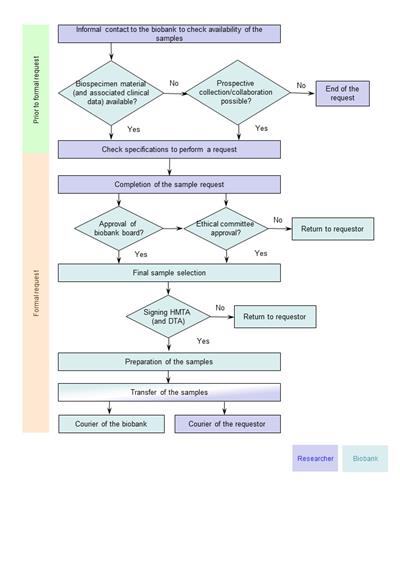Sample access
If a researcher retrieves his samples of interest, the biobank(s) hosting these samples should be contacted. Within the biobank, a sample access procedure is in place; these are the different steps to go through before the samples can be exchanged and used. Although each biobank has its own specific procedure, the main overlapping steps applicable in all biobanks have been summarized in the flowchart presented here below.
Important tips before requesting samples at the biobank:
A good description of the requested samples is compulsory: type of samples, pathology, minimum volume or quantity, characteristics (mutation), inclusion/exclusion criteria, .... This will save time for both the biobank as the requestor.
Specify the associated data as much as possible (sex, age, stage, treatment, ...)
Prepare a brief description of the research project, including the methods that will be used. The biobank can help to advise the correct samples for a certain method.
The use of biobank samples is not for free so a biobanking fee should be included when requesting a research grant.
When all conditions/criteria are met (ethical committee approval, clear project description, detailed description of the samples and associated data needed...) and if off course the samples are available, the duration of the procedure will take approximately 1 month.
